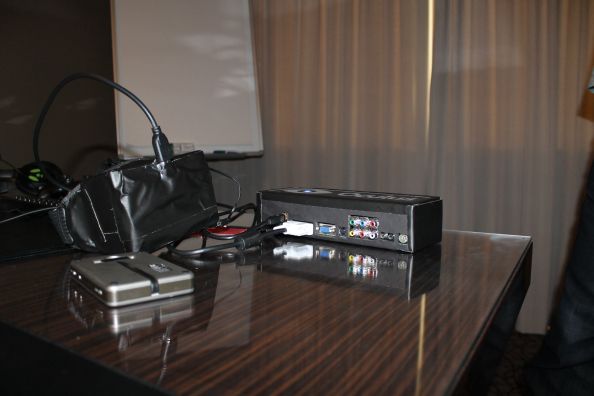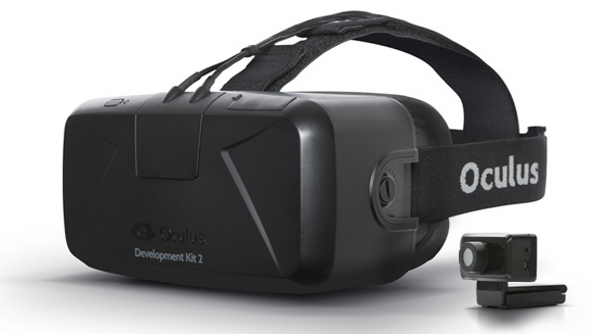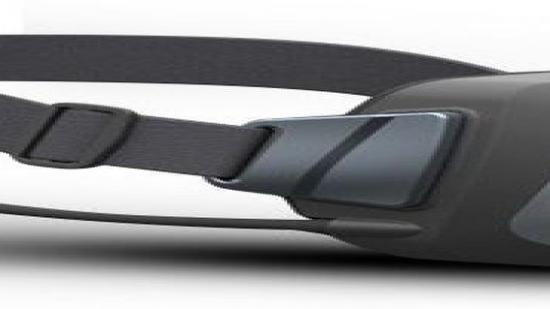The Oculus Rift, Palmer Luckey’s incredible 3D VR headset that’s currently finishing up its run on Kickstarter, is easily the most exciting piece of gaming hardware in the world. I played with it, and tinkered with it a bit at Gamescom, and I can’t quite get over how exciting it is.
Currently, the Rift is being shown alongside Doom 3: BFG edition – understandable given John Carmark’s partnership with Oculus on some of the hardware. And I loved playing Doom again – it was insane to be immersed so deeply and suddenly into the demon infested Mars City.
But there’s a problem with first-person games on the Rift: after a little bit of time, you need to have a little bit of a sit down.
The Oculus prototype that Palmer’s demoing is exactly that, a prototype. When you see it for the first time, it’s a bit baffling. In my demo, it was gaffer taped onto the rim of a Scott ski-mask, and wired into a large output box.

The gaffer tapes masks a suite of technology that is well in advance of anything else that’s around the market. The Rift makes a significant advances in the field of vision that users see, in the latency they experience in movements of their heads, and
I placed the mask against my face, and then adjusted it so the image was in focus. After that, I pulled the headband over my head. And then, I was inside Doom.
The mental incongruity of the experience was amazing. The first thing I felt myself doing was to put my arm where my avatar’s arm would be if it were holding the rifle he was holding in game. I moved my head to the left, and my view moved. Looked down, and my entire (real) arm moved. It was an exceptionally strange sensation.

At that point, Palmer dropped an Xbox controller in my hand, covered my ears with a pair of headphones… and I was away.
The first point of importance: Oculus does work. It’s a full 3D headset with an exceptionally wide field of view. The frame-rate was impeccable, and there was zero perceptible lag between my head movements and the motion translated on-screen.
Palmer advised that I avoided using the right-hand stick on the Xbox controller that much – instead, using the movement of my face to aim and pick directions. Everything I shoved my face at would die.
But…
After a ten minutes of playing, I started to feel hot and bothered. Not dizzy, just a bit overwhelmed. Partly, I think, because Doom 3 does a lot to jar and shake your viewpoint – when you’re charged by the weird floating head things.
Sat down, everything was fine again. Better really. I was more secure and stable – I wasn’t wobbling around when under attack from an imp. I felt more confident to swing my head around, more confident to get the best from the Rift.
And that’s when I started to think a little bit about the possibilities for where the Rift could truly succeed.
I think the best possible use for the Rift isn’t in FPS games. I think gamers who live simulations; whether they’re stompy robots (as I was writing this, Oculus and Meteor Entertainment announced that Hawken would be Oculus compatible), train-sims, flight-sims, driving simulators, spaceship sims, or even just bus-sims, should be getting very, very excited about the Rift.
What the Rift, combined with a good controller like a flight-stick or steering wheel, offers is complete immersion in a space. The problem comes in how the avatar moves around in that space. In simulations, the player avatar is held in a fixed position – he or she is not going to move around in space. The vehicle he or she is piloting does the moving, via whatever control device you’re using.
Right now, one of the limitations in sim games is the sensation of being in a cockpit. To achieve what the Rift achieves you’d have to surround yourself with monitors, to every side, above and below, and magnify your head movements with a peripheral like TrackIR. That’s an imperfect solution, one that the Rift easily leapfrogs.
In a sim game, the position of your body is usually fixed. You move your head in an arc around a point of space – but you’re always centred. I think this would avoid the sense of kinetic displacement I felt when I first entered the brain of Doom guy. Even better, in a sim game, there’s a pretty good chance we know where your hands are. In a driving game, your hands are going to be attached to the steering wheel. In a flight-sim, they’re on the flight-stick.
I’m hoping the sim community will sit up and take notice of what the Oculus means for their titles. But I’m also excited for what it may mean for the future of simulations.
Space-sims were and are my favourite genre of games, roughly abandoned by an industry that didn’t believe they could be profitable.
Frankly, I disagree. Space sims are amazing; and there’s a huge number of people who pine for the days when they were a PC gaming staple. Not just Eve’s epic space-war: something with joysticks and lasers and pew pew pew.
I want to cover my face with a giant viewscreen, put on a pair of headphones and head out into a dogfight, maybe never to return. I want to be the hero that defeats the alien threat, or I want to be the alien threat themselves.
Please. Someone. Get a kickstarter going for a spiritual sequel to Wing Commander or X-Wing. And in the first moments of your video; show it working in Oculus.
Then just shut up and take my money.
